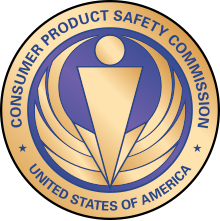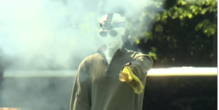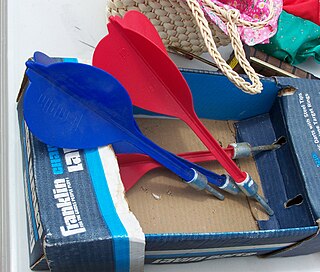
Lawn darts is a lawn game for two players or teams. A lawn dart set usually includes four large darts and two targets. The game play and objective are similar to those of both horseshoes and darts. The darts are typically 12 inches (30 cm) in length with a weighted metal or plastic tip on one end and three plastic fins on a rod at the other end. The darts are intended to be tossed underhand toward a horizontal ground target, where the weighted end hits first and sticks into the ground. The target is typically a plastic ring, and landing anywhere within the ring scores a point.

A product recall is a request from a manufacturer to return a product after the discovery of safety issues or product defects that might endanger the consumer or put the maker/seller at risk of legal action.

Inez Moore Tenenbaum is an American lawyer and politician who served as South Carolina Superintendent of Education and as chairperson of the U.S. Consumer Product Safety Commission. In 2016, she joined a law firm. She is a member of the Democratic Party.

A rare-earth magnet is a strong permanent magnet made from alloys of rare-earth elements. Developed in the 1970s and 1980s, rare-earth magnets are the strongest type of permanent magnets made, producing significantly stronger magnetic fields than other types such as ferrite or alnico magnets. The magnetic field typically produced by rare-earth magnets can exceed 1.2 teslas, whereas ferrite or ceramic magnets typically exhibit fields of 0.5 to 1 tesla.

Magnetix is a magnetic construction toy that combines plastic building pieces containing embedded neodymium magnets, and steel bearing balls that can be connected to form geometric shapes and structures. Designed to be a cheaper version of the Geomag magnetic construction set, Magnetix's image suffered severely when an early manufacturing defect caused a death. It was sold under various brands after the defect was corrected.

The Consumer Safety Act (CPSA) was enacted on October 27, 1972, by the United States Congress. The act should not be confused with an earlier Senate Joint Resolution 33 of November 20, 1967, which merely established a temporary National Commission on Product Safety (NCPS), and for only 90-days. Section 4 of the 1972 act established the United States Consumer Product Safety Commission (CPSC) as a permanent independent agency of the United States federal government and defined its basic authority. The act gives CPSC the power to develop safety standards and pursue recalls for products that present unreasonable or substantial risks of injury or death to consumers. It also allows CPSC to ban a product if there is no feasible alternative to an outright ban. CPSC has jurisdiction over more than 15,000 different consumer products. The CPSA excludes from jurisdiction those products that expressly lie in another federal agency's jurisdiction, for example food, drugs, cosmetics, medical devices, tobacco products, firearms and ammunition, motor vehicles, pesticides, aircraft, and boats. These products may fall under the purview of agencies such as the U.S. Food and Drug Administration, the U.S. Bureau of Alcohol, Tobacco, Firearms and Explosives, the U.S. Department of Agriculture, the U.S. Department of Transportation, the U.S. Environment Protection Agency, and the U.S. Federal Aviation Administration.
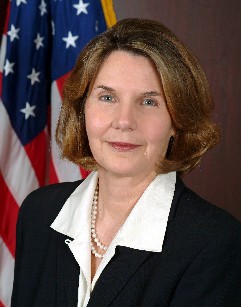
Nancy Ann Nord is an American former commissioner of the United States Consumer Product Safety Commission (CPSC). She served alongside Hal Stratton, Anne Northup, and Ann Marie Buerkle.

Toy safety is the practice of ensuring that toys, especially those made for children, are safe, usually through the application of set safety standards. In many countries, commercial toys must be able to pass safety tests in order to be sold. In the U.S., some toys must meet national standards, while other toys may not have to meet a defined safety standard. In countries where standards exist, they exist in order to prevent accidents, but there have still been some high-profile product recalls after such problems have occurred. The danger is often not due to faulty design; usage and chance both play a role in injury and death incidents as well.

Maclaren is a manufacturer of baby buggies, strollers and carriers based in England.
In 2007, a series of product recalls and import bans were imposed by the product safety institutions of the United States, Canada, Western Europe, Australia, and New Zealand against products manufactured in and exported from the mainland of the People's Republic of China (PRC) because of numerous alleged consumer safety issues. The many product recalls within the year led Consumer Reports and other observers to dub 2007 "The Year of the Recall.”

Britax is a British manufacturer of childcare products including car seats, pushchairs and high chairs.

Kids in Danger (KID) is an American non-profit dedicated to educating parents, training engineers, designers, and manufacturers, and advocating for improvements in children's product safety in cribs, toys, bathtub seats, bunk beds, car seats, carriers, costumes, crib bumpers, high chairs, gates, play yards, strollers, walkers, and other potentially dangerous items. Its website supplies listings of products recalled by the Consumer Product Safety Commission and provides suggestions and information on how to protect children. KID also works alongside other groups such as the Consumer Federation of America and Consumer Reports in order to improve product safety.

The Consumer Product Safety Improvement Act (CPSIA) of 2008 is a United States law signed on August 14, 2008 by President George W. Bush. The legislative bill was known as HR 4040, sponsored by Congressman Bobby Rush (D-Ill.). On December 19, 2007, the U.S. House approved the bill 407-0. On March 6, 2008, the U.S. Senate approved the bill 79-13. The law—public law 110-314—increases the budget of the Consumer Product Safety Commission (CPSC), imposes new testing and documentation requirements, and sets new acceptable levels of several substances. It imposes new requirements on manufacturers of apparel, shoes, personal care products, accessories and jewelry, home furnishings, bedding, toys, electronics and video games, books, school supplies, educational materials and science kits. The Act also increases fines and specifies jail time for some violations.
Pamela B. Gilbert is an American lawyer and has been a partner of the law firm Cuneo Gilbert & LaDuca, LLP since 2003, where she heads the firm's lobbying practice. Gilbert is a noted consumer rights advocate who has testified before Congress over fifty times and made dozens of appearances in the national print and electronic media. Gilbert leads the Committee to Support Antitrust laws (COSAL), an organization supportive of antitrust legislation.
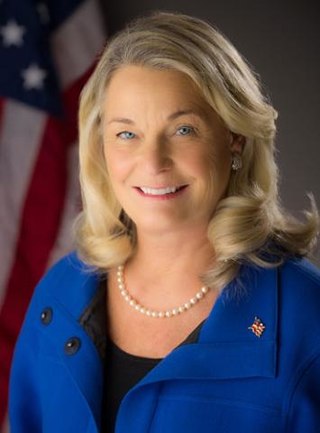
Ann Marie Buerkle is an American nurse, attorney, and politician. She served as a commissioner of the U.S. Consumer Product Safety Commission (CPSC) beginning in July 2013 and was the agency's acting chairman from February 2017 to September 2019. During her tenure, the number of companies fined declined sharply, and she was criticized by consumer advocates. Buerkle’s public service career stalled after accusations of mismanagement and incompetence. Buerkle was an Assistant New York State Attorney General from 1997 through 2010. She served as the U.S. representative for the New York's 25th congressional district, elected in 2010 in an upset of a Democratic incumbent. In a rematch of her 2010 contest, Buerkle was defeated by former Congressman Dan Maffei. She is a member of the Republican Party.

Robert S. Adler is a consumer advocate in the United States. He was a member of the U.S. Consumer Product Safety Commission, and recently served as its acting chairman from October 2019 to October 2021. He is a Democrat, and became acting chair due to a surprise vote crossing party lines from former acting chair Ann Marie Buerkle.
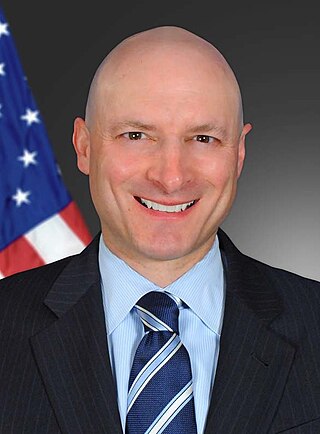
Elliot F. Kaye is a former Chairman of the U.S. Consumer Product Safety Commission. He served as a commissioner of the agency from 2014 through 2021, and was chairman from 2014 to 2017 under the Obama administration, directing the U.S. government's oversight and recall of everyday products that can cause injury or death.

Peter A. Feldman is an American lawyer and currently serves as a member of the U.S. Consumer Product Safety Commission. Feldman was nominated by President Donald J. Trump and confirmed by the U.S. Senate in 2018. Previously, he served as a senior counsel to the Commerce Committee in the U.S. Senate. Feldman is a Republican, and worked as a staffer for various Republican senators.

Alexander Hoehn-Saric is an American attorney and government official. Since October 2021, Hoehn-Saric has served as chair of the Consumer Product Safety Commission, concurrently serving as a commissioner. Hoehn-Saric is a Democrat.
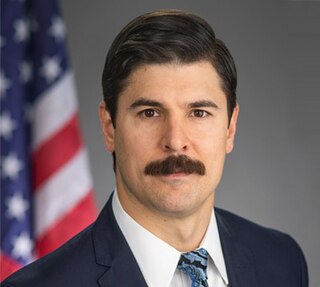
Richard Louis "Rich" Trumka Jr. is an American lawyer and government official. He is currently a member of the U.S. Consumer Product Safety Commission, serving since December 2021.
